
About Andrew Cusack
 Writer, web designer, etc.; born in New York; educated in Argentina, Scotland, and South Africa; now based in London.
Writer, web designer, etc.; born in New York; educated in Argentina, Scotland, and South Africa; now based in London. read more
News
Blogs
Reviews & Periodicals
Arts & Design
World
France
Mitteleuropa
Knickerbockers
Argentina
The Levant
Africa
Cape of Good Hope
Netherlands
Scandinavia
Québec
India
Muscovy
Germany
Academica
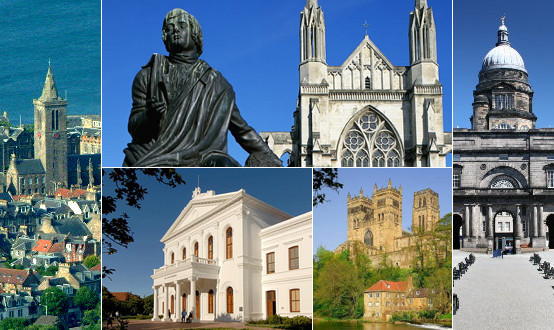
Best Universities in the World
From north to south, a completely arbitrary and biased accounting
WHILE UNIVERSITY rankings within countries have been popular for some time now, especially in the United States and United Kingdom, it’s only been in the past decade or so that worldwide rankings of universities have come to the fore. The most widely known is probably the Academic Ranking of World Universities produced by Shanghai Jiaotong University, alongside the QS World University Rankings from the firm Quacquarelli Symonds, and the T.H.E. World University Rankings from the weekly magazine Times Higher Education. All such ratings employ varying statistical matrices and methods of divination obscure to the outsider but which, one supposes, must have some form of merit. They are more useful for gaining a general impression of the place of a university rather than comparing and contrasting two or more particular institutions.
The aforementioned ranking structures are rather to formal for us to gain all that much knowledge from. Personal interactions, reputation, age, style of architecture, and other such factors carry much greater import when I judge universities. Oxford and Cambridge, whether you like it or not, are still the top universities in the world, even if they might not be our favourites. You just can’t beat them. While they might not be as much fun as other places, they come closest to achieving the balance of age, tradition, interesting people, serious research, good location, and general niftiness.
For a certain type of person, Harvard remains paramount among American universities, but to be a Harvard undergrad has carried a certain social stigma in our quarters for the past two or three decades. Harvard Business School, however, remains perfectly acceptable. In the Ivy League, Yale, not Harvard, is king, followed by Brown (not thanks to its radical professoriate but rather due to the strong Continental infiltration amongst its studentry). Dartmouth is the fun #3 of the Ivies, while the rest are forgettable (well, Princeton’s not bad really — it has the Whitherspoon Institute — but Cornell, Columbia, and Penn are yawn-worthy).
Up to this point, we have been speaking generally, but there are topical institutions of course. If you really must study ‘business’, then there’s Harvard Business School or INSEAD. Are there any other business schools of actual note? In the military realm, Sandhurst is the unquestionable king. The École royale militaire in Brussels is up there — being Catholic, Francophone, and monarchic attracts good elements from outside Belgium. In the States, there is the Citadel and VMI, but not much else (the federal ‘service academies’ have poor reputations except for Annapolis). One doesn’t hear much about Saint-Cyr these days.
Speaking of France, the reason one can’t come up with proper rankings is because some institutions or groups of institutions would be entirely outside it. The grandes écoles are the best example. They are superbly elitist, the absolute top, but they mostly exist in that little French world, with all its delights and limitations.
But for ‘topical’ institutions, the University of London has plenty: SOAS, LSE, the Cortauld, the various institutes of the School of Advanced Study, etc., etc.
There are also those interesting little schools of art history and conservation, attached to museums like the V&A or auction houses like Sotheby’s and Christie’s. The École du Louvre, however, must be the queen regnant of these schools.
Charles Taylor’s presence at McGill alone makes it worthy of note, but one suspects there are other strengths at the university. At any rate, it is still a perfectly respectable place to be an undergraduate. Boston College is also quite strong at the postgrad level, except in the theology school where heresy is widely believed to be thriving. Given the wealth and particularity of America’s universities, there are small and unknown centres of excellence in many unexpected places (for example the quite strong literary translation centre at the University of Rochester).
Rome’s universities of both church and state have shabby academic reputations but still attract for being Roman. One always hears seminarians complaining about the Gregorian, but no one can never really complain about Rome, and being a student or a seminarian is as good a reason to be in Rome as any. Rome also has John Cabot University, an ‘American’ institution divided between Americans on their semester abroad and the full-timers (often the layabout members of larger European families, who also frequent the American University of Paris).
And of course many of the Italian universities are not so much places of learning as conspiracies for the avoidance of unemployment on the part of their academics and administrators. Regrettably, much Italian talent moves abroad for higher salaries and better working conditions (Cavalli-Sforza, to name but one, at Stanford), but the handful of scuoli superiori (e.g. the Scuola Normale in Pisa) still maintain their dignity.
In Spain, Salamanca is well-regarded, and there are a number of newer, private, properly Catholic entities that have been created. Of course, Opus Dei are very proud for having created the University of Navarre ex nihilo. Portugal, meanwhile, has yet to recover from the Marques de Pombal’s disastrous eighteenth-century reform of Coimbra.
If you’re one of those people who actually wants a proper education then, for better or worse, you must go to America. Thomas Aquinas College in California and St. John’s College in Maryland might be the last genuine places of higher learning in the European world. Attempts are being made to found a British Catholic version, and many imitations (Catholic, Protestant, and secular) exist around the United States.
If I could name some other honorable mentions in addition to those featured below, I would add Dublin (Trinity, that is), Bristol, the Collège d’Europe, Leiden, Leuven, Utrecht, Uppsala (and all the old Scandos), Heidelberg (and a dozen other German universities), King’s Halifax, Trinity College in Toronto, some parts of Berkeley, York for graduate study but not undergrad, the C.E.U. in Budapest (despite being a Soros project), and Exeter and Warwick aren’t bad really. Some universities, like the Jagiellonian in Kraków or the Charles in Prague, must be mentioned due to age, but I have to plead ignorance as to any knowledge of their current state.
I’m probably leaving out a dozen places that deserve a mention but I’ve forgotten; such are the limits of our fallen human nature. Here follows, arranged from northernmost to southernmost, our completely arbitrary and biased accounting of the six best universities in the world.
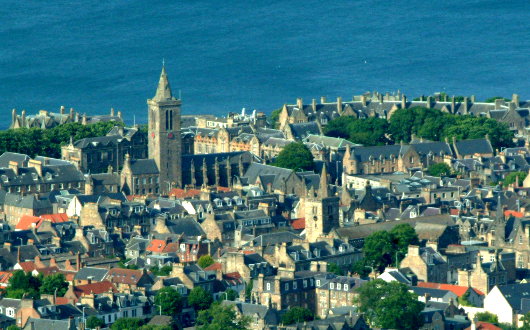
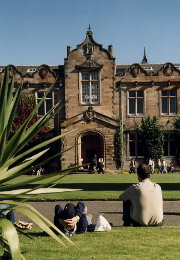 St Andrews
St Andrews
The University of St Andrews, Scotland
It’s almost needless to say that St Andrews is the greatest university on the face of God’s green earth, even if it is known as the ‘auld grey toon’. It’s cold and grey enough during the winter to build character but nothing could be more delightful than a stroll down the West Sands on a late spring afternoon — especially if preceded by a five-course lunch amongst friends. Tweed, the after-chapel sherry, the cathedral ruins, the names of departmental buildings that read like a roll of the inhabitants of Heaven: St Katharine’s Lodge, St John’s House, St Mary’s Quad. With balls galore, and more in Edinburgh if you’re bored, four years at St Andrews will definitely wear out your dinner jacket, and an evening of reels will keep you in good health despite the cigarettes and champagne.
It doesn’t hurt that the university has the royal seal of approval, though that seems to matter more now than at the time. Undergraduate Wales and I overlapped for three years at St Andrews, and his presence was barely noticeable — someone you would pass in the street or mention if he had been present somewhere but otherwise his right to normality was jealously guarded by fellow St Andreans, and rightly so.
I’ve already written extensively about the place, so perhaps it would be best to summarise with the words of John Martin Robinson, the current Maltravers Herald of Arms Extraordinary, who described St Andrews as “similar to some people’s view of the afterlife: still like Earth but purified of the unpleasant elements”.
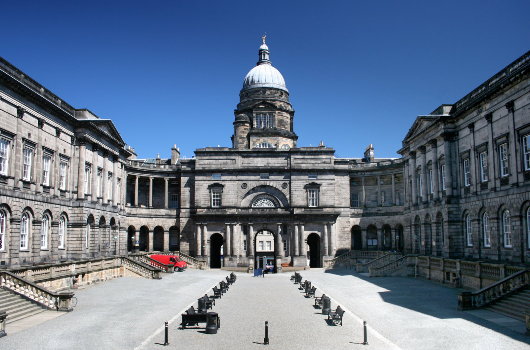
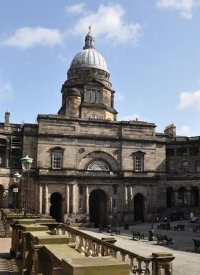 Edinburgh
Edinburgh
The University of Edinburgh, Scotland
Edinburgh University is St Andrews’ younger cousin and the relationship between the two is a bit like that between town and country. St Andrews is in a country town made exceptional by its university, politico-ecclesial history, and that weird sport with sticks and balls, whereas Edinburgh is Scotland’s capital and perhaps the finest city in the English-speaking world.
Location alone makes the University a desirable place to begin with, but it’s a respectable institution in its own right, and has a fun and slightly jauntier mix of people than St Andrews. It’s not unheard of for some families in London and the south of England to send their eligible daughters to Edinburgh for a few years in the hopes of finding a suitable mate. Most often this is as students at Edinburgh University or the Edinburgh College of Art, but sometimes they just buy a flat on India Street and enjoy the social life. Edinburgh U. first-years have to live in the notorious Pollock Halls of Residence, however, which definitely counts against the institution.

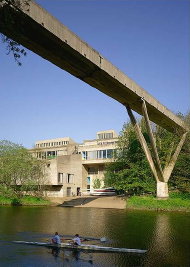 Durham
Durham
The University of Durham, England
Properly speaking, the University of Durham is the third-oldest university in England, though there’s a pedantic argument on this point duly documented on Wikipedia. The town has the greatest cathedral in the kingdom, and if students join University College (one of sixteen Durham colleges) they have the opportunity of living in Durham Castle, the former bishop’s residence donated to the University shortly after its 1832 foundation.
The ancient capital of the County Palatine is far enough away from London to be outside the metropolitan orbit (as Oxford and Cambridge often aren’t) but having Newcastle and Middlesbrough as the two closest cities is not something in Durham’s favour. The dramatic riparian geography of this cathedral city, however, more than makes up for its less refined neighbours.
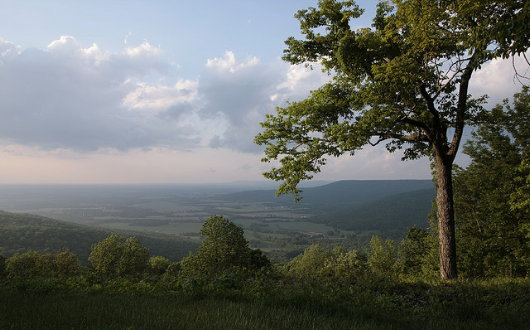
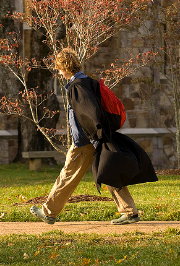 Sewanee
Sewanee
The University of the South, Tennessee
If the Ivy League universities are America’s Oxbridge, then Sewanee is the St Andrews of America. Student gowns are even worn, although their use is limited to members of the ‘Order of Gownsmen’, initiation into which is quite boringly based only on the very limited criterion of academic grade point average. Students are known for their attire — neckties predominate for gents attending tutorials for example — and a widespread if perhaps somewhat facile conservatism.
The university was founded by the Southern dioceses of the Episcopal Church and is the sole remaining university retaining its Episcopalian status, an affiliation it takes seriously despite being culturally out of step with the rest of the ever-liberalising, ever-shrinking denomination.
The South is the most interesting part of the United States, and, while a small and insular institution, the University of the South reflects much of the old Confederacy’s attractiveness. Sewanee’s gothic campus sits in the 13,000-acre “Domain” of the University (see above) atop the sylvan Cumberland Plateau in Tennessee. It is a tiny university actually — just 1,400 undergraduates and 150-200 postgraduates — but despite this boasts twenty-five Rhodes scholars. Plus its founding bishop, Leonidas Polk, doubled as a Confederate general during the ‘Late Unpleasantness’. It all adds up towards the definition of a unique and fascinating institution.
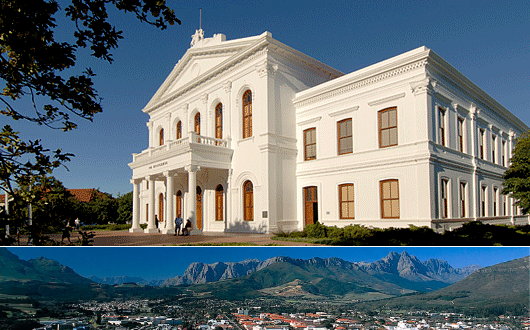
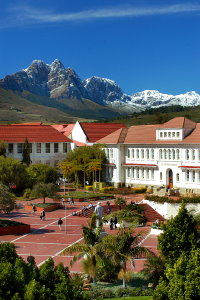 Stellenbosch
Stellenbosch
The University of Stellenbosch, South Africa
It would be difficult to conceive of a more ideal location for a university. The centuries-old town of Stellenbosch dominates a small mountain valley in the verdant pulchritudinous winelands of one of the most beautiful lands in the world: the Western Cape province of South Africa. For the Afrikaners, whose language and higher culture developed under the shade of the giant oak trees planted by the old Dutch governor, Simon van der Stel, it is effectively ancient Sumer.
Yet Stellenbosch is not an old past-its-prime ruin but a thriving university town the Financial Times described as “full of well-groomed students with beach-ready figures”. In architectural terms its streets are lined with old Dutch houses alongside modern buildings ranging from the sensitive to the inoffensive.
The town does surprisingly lack a good bookstore, a statement that must be made with apologies to the very capable and friendly staff at the Stellenbosch branch of Exclusive Books on Andringastraat. The Van Schaik Boekhandel in the Neelsie concentrates more on books required by course reading lists, though the Protea Boekhuis further down Andringa at least has a decent second-hand selection.
The town so epitomises leafy comfort one almost forgets the university, its crowning glory. While it has an Afrikaans literary tradition second to none, Matieland isn’t shy of scientific glory: the ‘SUN’ in SUNSAT, arguably Africa’s first satellite, stands for Stellenbosch Universiteit.
As an academic institution of learning and research, its strong points are many: it features towards the top of every list of the best universities in the country and the continent for Law (its most prestigious school), Medicine, Business, Engineering, (Reformed) Theology, Agriculture & Forestry, and of course Afrikaans & Dutch. The History school boasts the unmatchable Hermann Giliomee, but I wonder if Stellenbosch has been losing out on this front to UCT (where Giliomee spent most of his career) and UWC (which boasts Antonia Malan). The closure of the unique Cultural History programme is certainly to be lamented.
More generally, the university’s leadership must be chided for their lamentable decision to turn Stellenbosch into a totally parallel-medium institution (that is, simultaneous course tracks in Afrikaans and English). It will be a sad and loathsome day when a Stellenbosch undergraduate can obtain a degree without taking a single course in Afrikaans.
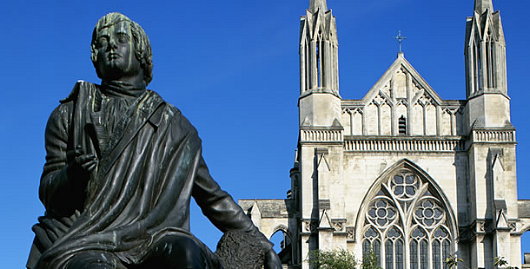
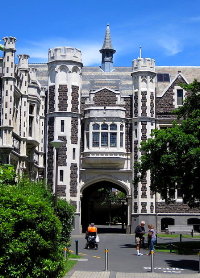 Otago
Otago
The University of Otago, New Zealand
I confess knowing next to nothing about the University of Otago, the oldest in New Zealand, but this accounting makes no claims to be based on actual solid evidence. It might seem curious that Dunedin beat the now-larger cities of Auckland, Christchurch, and Wellington in establishing New Zealand’s first university in 1869, when the town was capital of the Province of Otago. This is explained by Dunedin’s status at the time as the largest city in New Zealand thanks to the Otago gold rush of the 1860s.
When the university set about erecting its first buildings of its own in the 1870s, the administration set the tone for future generations with its choice of a domestic interpretation of the Collegiate Gothic, built in local bluestone faced with Oamaru stone. As Dr D.M. Stuart, the chancellor of the day, commented, “the Council had some old-world notions and liked to have a university with some architectural style”. That fine concept — old-world notions planted firm in fertile new-world soil — undergirds much of the spirit of Otago and indeed the best of New Zealand itself.
Otago is a collegiate university and the names of its colleges harken back to the region’s Scottish roots: Knox, Salmond, St Margaret’s, Cumberland. Aquinas College was founded by the Dominicans in 1954 and it counts among its former students the Right Honourable Sir Anand Satyanand GNZM QSO KStJ, 19th and current Governor-General of New Zealand, and the first Catholic to hold that office. Sadly, the Dominicans left and the college was secularised in the 1980s. The obviously Presbyterian Knox College enjoys a strong rivalry with the Anglican Selwyn College, which was visited by Michael Palin during his 1996 television programme “Full Circle”.
Search
Instagram: @andcusack
Click here for my Instagram photos.Most Recent Posts
- Sag Harbor Cinema March 26, 2025
- Teutonic Takeover March 10, 2025
- Katalin Bánffy-Jelen, R.I.P. March 3, 2025
- Substack Cusackiensis March 3, 2025
- In the Courts of the Lord February 13, 2025
Most Recent Comments
Book Wishlist
Monthly Archives
Categories



A wonderful tour de force in proper Cusack style — thank you, Andrew! I will, however, quibble slightly with you on a few points. The various “world rankings” (including the THE) do include the French grandes ecoles (including the semi-military and rather impressive Ecole Polytechnique), but that is part of their problem: the attempt to rank together institutions of every size and character, from large research universities to small specialized institutions and even US liberal arts colleges. Inevitably, this is all weighted to the advantage of the largest and most research-intensive institutions.
Regrettably, most of the great Continental universities were either ruined in the late 1960s or haven’t fully recovered from the dark years of the Soviet yoke. Others have perhaps lost their distinctiveness — including TCD. I might recommend an enjoyable leaf through “Trinity Tales: Trinity College Dublin in the Sixties” — which amusingly captures the final Indian Summer of this once highly eccentric Anglo-international “Irish Tangiers,” with its “peers to racketeers” — a “cornucopia of misfits, mercenaries and missionaries.” Today it remains a fine university, but only with about 10% international students — and some would say largely indistinguishable from UCD save for some interesting architecture.
As the proud father of a happy bejantine (first year) at St Andrews, husband of a Stanford graduate, son-in-law of a doctor of Heidelberg and Bonn, and with a Harvard MBA myself, I await your next piece — perhaps covering the great university clubs and societies of the world?
I am happy to be able to inform you, Mr Cusack, that St Cyr is flourishing. It continues to attract the sons of the best families, is as rigorous in its way as any of the grandes ecoles, and, best of all, is significantly peopled with pious monarchists who habitually attend the traditional Latin form of the central liturgical act of the Roman church.
Always pleased to see my alma mater (Edin) make the list. I will also stump for the grand ecoles, in particular Sciences-Po Paris. We boast every Prime Minister and President in the current republic and one of the oldest monarchist societies in France. This alone combined with extensive sojourns for wine post-class and its location in the centre of Paris make it beyond compare in France and on the entire continent.
Also Andrew I am surprised you listed Sewannee instead of Hampden-Sydney College in Virginia…
Also no mention of the Hilltop aka Georgetown? Surely far more respectable than BC, no?
Naturally I didn’t expect my alma mater, Assumption College of Worcester, MA, to make the list, but it did me good. Happily, I may be able to attend St. John’s in Annapolis for graduate studies next year, after I retake the GRE.
Well, my old alma mater, Sydney University, didn’t make the cut; neither, as far as I can see, did any other Australian seat of learning. (I wish I could remember the name of the wit who said, with cruel accuracy: “Australia doesn’t have 47 universities, it has one university with 47 campuses.”)
Of course there are other international rankings where Aussie universities do rather well, but these rankings are mostly devised by Chinese agencies, i.e. any antipodean campus where 99% of student conversations are carried out in Mandarin will automatically get an A.
What? No Caltech or MIT? The Brass Rats will be out in force!
(You may disregard this opinion as I went to UT Austin and…*burps and crushes beer can against head*)
West Point usually ranks fairly high on the university lists and yet it does not warrant a mention?
These are just establishment schools. Anyone who thinks universities are important in this way is underdeveloped in his career.
Mark R, I think you’ll find that’s precisely the reason why the author called this listing “completely arbitrary”.
That’s exactly why I gently pointed out the two big engineering schools in the US, Mark. I do believe that Lord Snow would certainly understand in what way this list biased.
Your failure to include the Rheinische Friedrich-Wilhelms-Universität is most distressing!
Without Leuven, there would have been no catholics left north of the Rhine. Only that should earn it a place in the top six, now wouldn’t it?
And to list only English speaking universities: universities do exist in the civilised world too, you know?
I’m working on a PhD at the Canadian school you mention. I have a MA from another “top” Canadian school (whatever that means).
Name doesn’t matter in college ed. Just go where you can get a scholarship and find good profs to work with. Try to get out of undergrad school with no debt. If you can stand your parents, live at home and save on rent. It’s better to deficit spend for the doctorate than take out huge loans to go to an Ivy or similar. Go to the Ivy for grad school.
Colleagues and advisors at the PhD level don’t care where you did your undergrad. It’s all about the research performance. Need the sticker for the car anyway? Just buy the prestigious sticker and put it on the back of the car. A few dollars, and no one’ll be the wiser.
I was glad to see two of my universities, The Citadel and Navarre, mentioned! Of course, Navarre’s Business School is very highly regarded in Europe.
Agree with NS Nelson: no Georgetown?!
Jack Rivlin in the Telegraph:
Oxbridge types are smug, but not as bad as the bitter rejects who mimic Brideshead at St Andrews and Durham.
http://blogs.telegraph.co.uk/news/jackrivlin/100194490/oxbridge-types-are-smug-but-not-as-bad-as-the-bitter-rejects-who-mimic-brideshead-at-st-andrews-and-durham/